Stoves for cauldrons: types, selection criteria and installation features
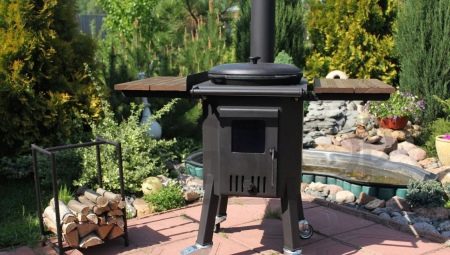
Eastern cuisine, especially Caucasian, makes a truly enchanting impression on most people. But to enjoy it, it is not enough to understand the recipes and even have the right dishes. including a cauldron. The auxiliary equipment is also of great importance, which also deserves careful study.
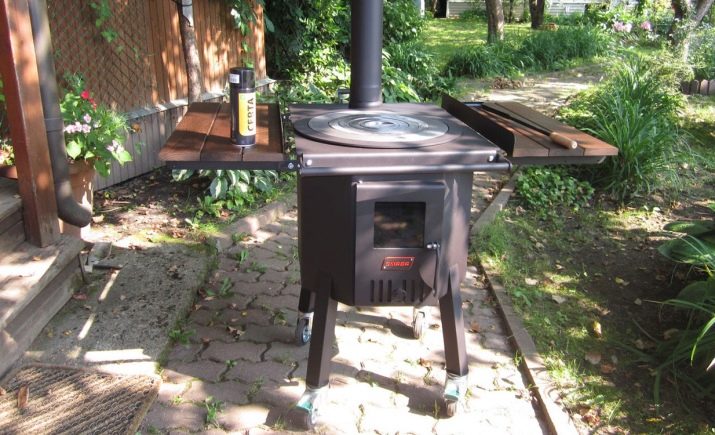
Peculiarities
The cauldron is evenly heated by an open flame. This means that the walls and the bottom have the same temperature from the inside. But a good result can be achieved only when using a high-quality oven. There are stationary and mobile ovens for cauldrons. The first type can be used all year round, and the second is needed mainly:
- travelers;
- tourists;
- hunters;
- fishermen.
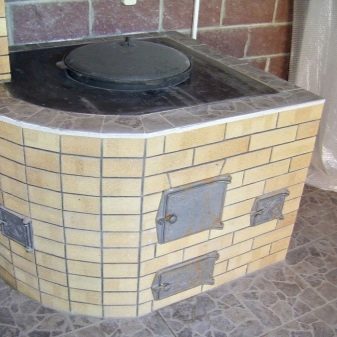
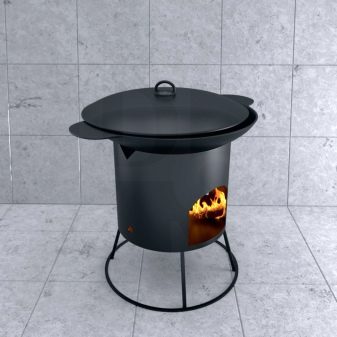
Do not think that only pilaf is cooked in a cauldron. This type of tableware is widely used in the preparation of meat and fish dishes. Among them are widespread:
- stews;
- ear;
- soups of various types;
- Conder.

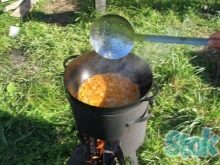
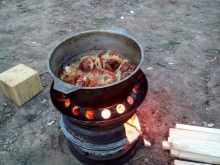
It is much more practical to cook any of these dishes in a cauldron with the help of an oven, and not over a fire. The closed hearth is reliably protected from the wind, which saves heat. In most cases, stoves are made collapsible and equipped with removable legs. This design is convenient for storage and transportation.
Externally, the stove looks like a round barbecue.
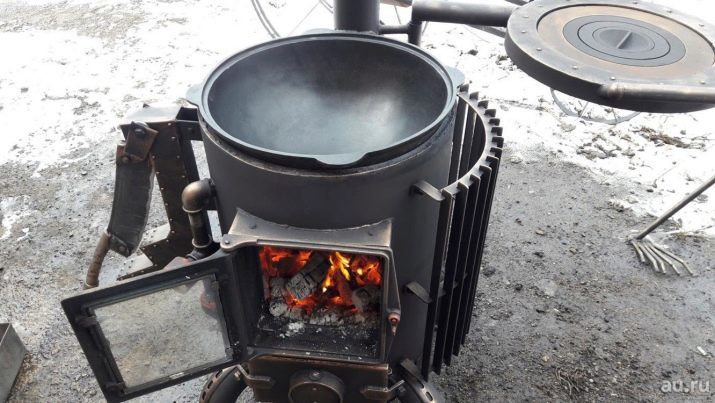
Views
Stoves for cauldrons are made of metal or brick. If the choice is in favor of a metal structure, then stainless steel is the ideal solution. Only occasionally is ordinary ferrous metal coated with heat-resistant paint. But this design is not very perfect and does not last long enough.
The simplest type of stove in execution is cylinder-shaped firebox... A hole is made in it for loading fuel and smoke slots. The cauldron is placed on top and about 60-65% of the bottom is in direct contact with the fire.
If you need the lightest oven for a cauldron, then prefer a tripod. To make it, it is enough to bend the metal tube into a circle and weld or bolt the legs. This is an excellent mobile product, however, the uniformity of heating of the walls is not always ensured.
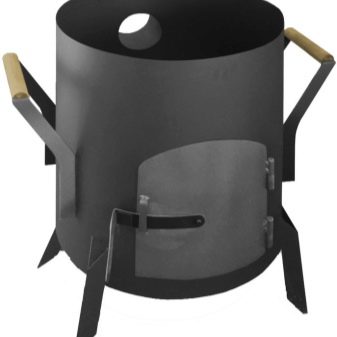
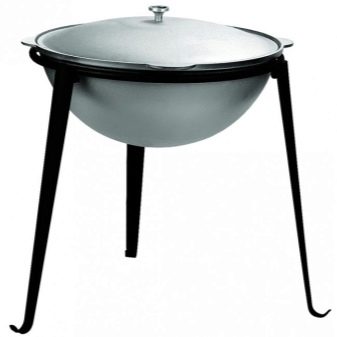
Let's consider in more detail the characteristics of stoves from:
- metal;
- bricks;
- clay.
Metal constructions:
- are relatively inexpensive;
- installed without problems;
- do not create difficulties in use;
- can deform under intense mechanical stress.
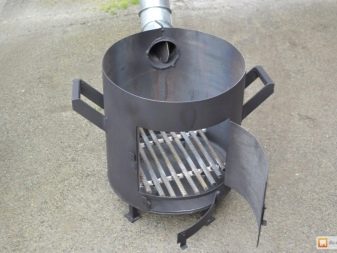

By the brick ovens there are positive aspects. It is this option that best of all corresponds to the canons adopted in Central Asia and the Transcaucasus. Brick keeps heat well, allows you to use voluminous, weighty cauldrons. However, it is difficult to make such a furnace and therefore it is very expensive.
Earthenware simpler than others and have relatively modest dimensions, while their serious drawback is unsatisfactory strength.

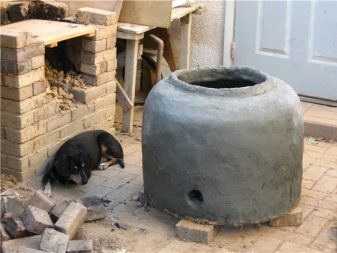
Chimney and chimney designs have conflicting properties. On the one hand, such additions make the combustion more stable and improve the culinary result. On the other hand, the oven becomes heavier and even loses its mobility to some extent.
Some versions of cauldron stoves run on gas fuel. We are talking, for example, about the Kotlin stove TG-38 (volume of 12 liters) and TG-48 (volume of 22 liters).
The advantages of gas pockets are:
- no soot;
- no smoke;
- ease of start-up;
- ease of changing the operating mode.

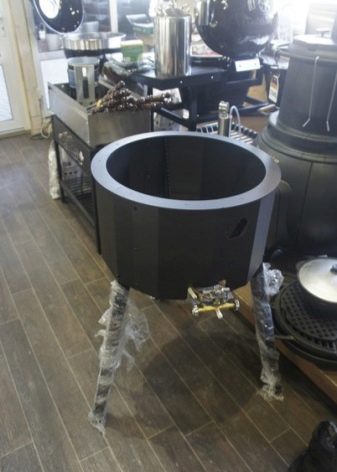
There are also gas tagans. An example of such a design is the TG-26. It was designed with the goal of making a portable and relatively powerful device for portable use. The TG-26 model is optimal for cauldrons with a capacity of 6-8 liters, but in principle, you can also use dishes with a capacity of 10-12 liters. Its main parameters are as follows:
- landing diameter - 0.26 m;
- weight with burner - 9.4 kg;
- height with legs - 0.72 m.
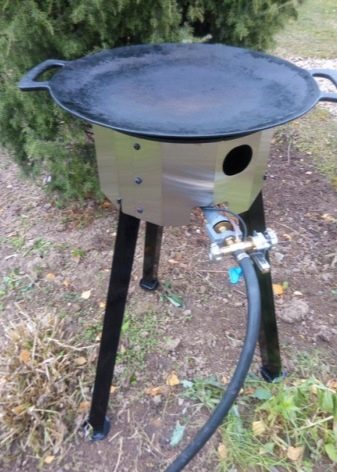
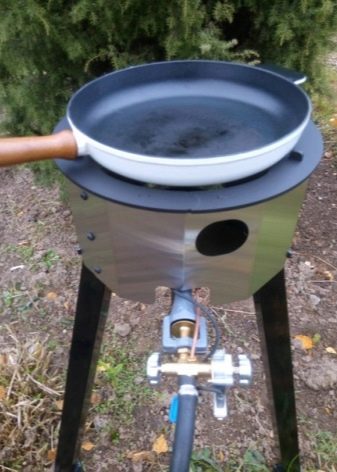
The TG-38 and TG-48 models also operate on gas. Gas tagans can be used both outdoors and in specially prepared rooms. Even cast-iron cauldrons can be used without any problems on such hearths - the basis is quite strong. The furnaces themselves can also be made of cast iron alloys. They allow you to save fuel, since the hearth heats up very quickly and cools slowly.
The considerable weight of the cast iron is also a plus. Thanks to it, the stability of the structure is ensured. Another property of cast iron products is also important - they rust weaker than those made of steel. Cast iron is very heat-resistant and does not burn out. Structures of different appearance can be made of it, which serve for a long time.

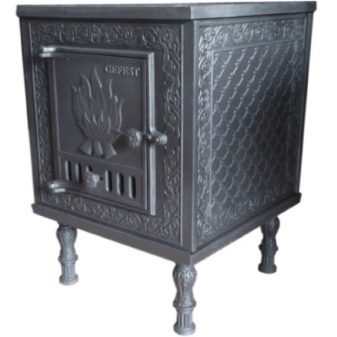
As for the chimneys, they are divided into 3 main groups:
- pipe;
- grate;
- small triangular notches at the top of the cylinder.
Among street stoves for cauldrons, square metal products with chimney flues are most widespread. They are mainly made from steel sheets. Such forms as are widespread:
- cylinder;
- rectangular prism;
- square prism;
- hexagonal prism (less often with an even greater number of faces).

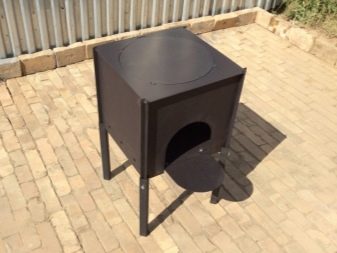
How to choose?
In most cases, it will be quite correct to equip the stove with a chimney. It is used to reduce smoke pollution around the hearth. This problem is quite solvable if the pipe is high and the thrust is sufficiently intense. With regard to the thickness of the steel sheets, 3 mm is sufficient. Such sheets allow you to:
- do not strengthen the structure;
- not to be afraid of burning out;
- guarantee the ease of movement of the oven.
If you plan to use a cauldron with a volume of 10 to 20 liters, you can choose a stove waist-high for an adult. For heavier cauldrons, such high hearths are no longer suitable.
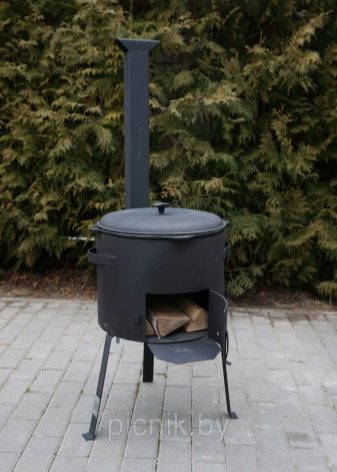
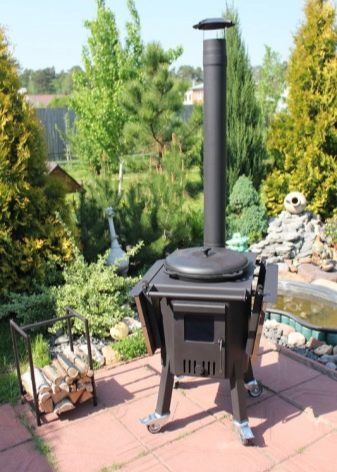
Squat structures are less comfortable, but they are more stable.
Regardless of the height of the stove, it is worth paying attention to the material from which it is made. Quite popular brick structures can be not only a stand for a cauldron, but also a whole complex, including:
- smokehouse;
- barbecue;
- brazier;
- many other elements.
Of course, this is not a very cheap solution. However, its qualities fully justify the significant cost. But brick ovens must be abandoned if the mobility of the hearth is an important point.
On the other hand, external beauty and functionality can be considered their advantages. Of course, buying a brick hearth in the usual sense of the word will not work - it will have to be built. The construction takes some, albeit not too long, time.
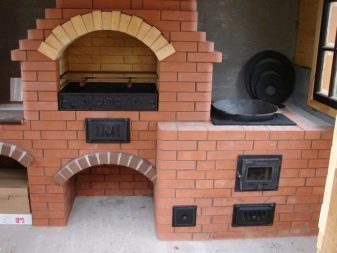
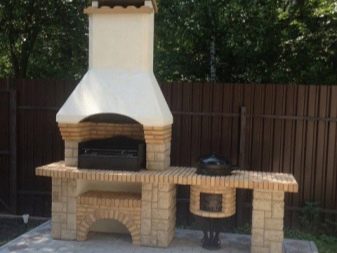
As for metal stoves, when choosing between their modifications, you need to pay attention to:
- total value;
- wall thickness;
- the type of metal used in a particular case.
Metal furnaces are of stationary or mobile design. The first type should be chosen if the most important thing is external grace and durability. The second type is recommended when you plan to often go on picnics, hiking, fishing. If it is mobility that matters most when choosing, it is worth abandoning cast iron stoves. But their steel counterparts can be moved even without any transport.

However, one must understand that everything has its downside. The lightest steel furnaces often burn out in a short time. However, one should not be particularly afraid of this. After all, mobile products are mainly used in hiking. If this is the case, and the stoves are not trying to be used as the main culinary devices at home, there will be no problems.
Another point is often missed - the selection of a stove for the size of a cauldron. A hole of the appropriate diameter must be made in it. Therefore, you must first purchase one or more cauldrons, and then look for a suitable hearth. Ideally, you should buy all goods in one place, because they usually sell compatible models. In any case, it is not superfluous to be interested in specific details and nuances.
Do not be afraid to ask sellers questions about the main characteristics of a particular oven. On the contrary, if traders are clearly shying away from answers, one should be wary.
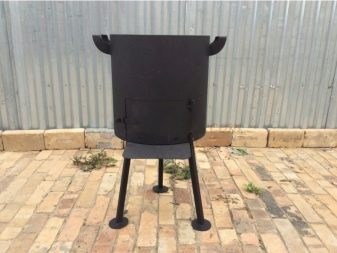
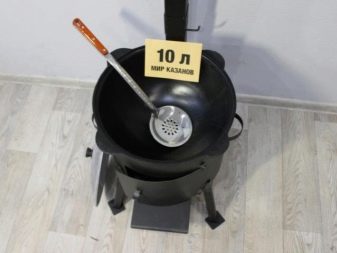
Among all the shops, those selling ovens and cauldrons from the manufacturer are better suited. They set minimum prices and rarely sell an unreliable product.
When evaluating a trading establishment, one should also pay attention to the completeness of the assortment, the quality of product descriptions.
Returning to the ovens themselves, it is worth pointing out that steel and cast iron products must have legs. A flame above the ground warms up the dishes better. The same circumstance will allow you not to bend over again.
It makes no sense to purchase stoves made of metal sheets thinner than 2 mm. They will either burn out very soon, or sag under load.

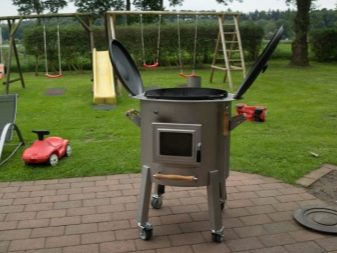
Top Models
A good choice, in addition to the furnaces of the TG series, which have already been discussed, will be the MS-13 model. This is a collapsible product with a furnace size of 0.4 m outside and 0.245 m inside. The main body is assembled from 3 mm thick sheet. The total weight of the structure reaches 17 kg.
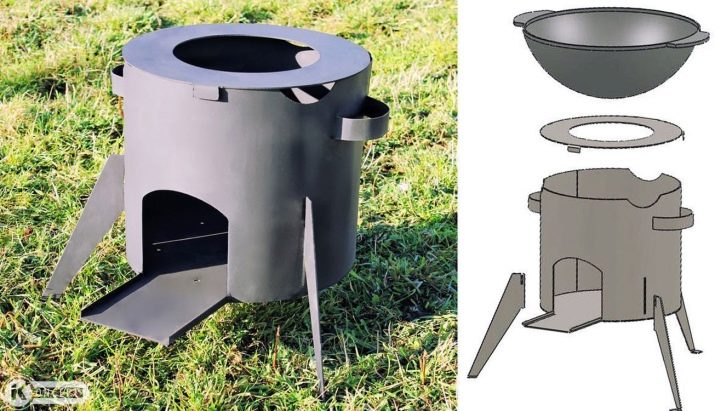
The Grilever Berel 360 model can also be a good alternative. The parameters of this product are as follows:
- compatible with cauldrons up to 8 l;
- dismantled chimney;
- ash box, in parallel performing the function of a blower;
- case thickness - 3 mm;
- coating with heat-resistant dye, designed for temperatures up to 700 degrees.
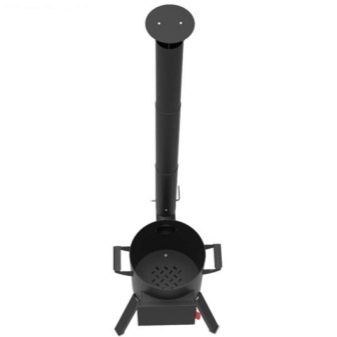
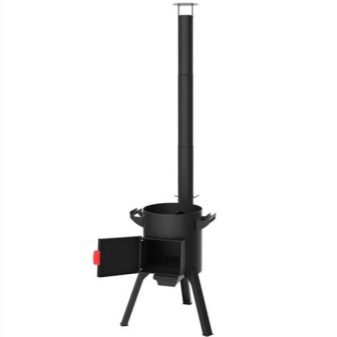
Larger cauldrons (up to 16-25 liters) can be warmed up on the MO-25 stove.The walls of such hearths are made double; the chimney is also necessarily used. According to the manufacturer itself, this device belongs to the premium category. Double walls provide another advantage - the minimum likelihood of burns. A special damper installed on the chimney will help to accurately adjust the heat output of the flame.
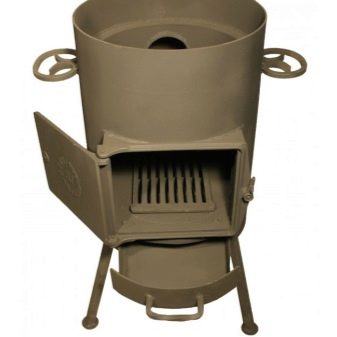
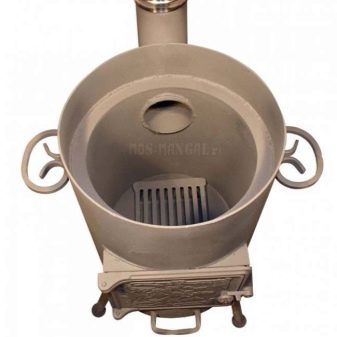
The Raketa-3 furnace runs on solid fuel. The intensive supply of air to the combustion chamber creates a loud noise, which is why such an atypical name was given. The horizontal section of the pipe makes it easier to load the wood and increases the safety of using the device as a whole. The thickness of the steel walls is up to 2 mm. The set includes a pair of dish holders.
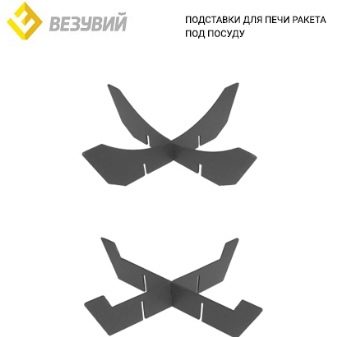
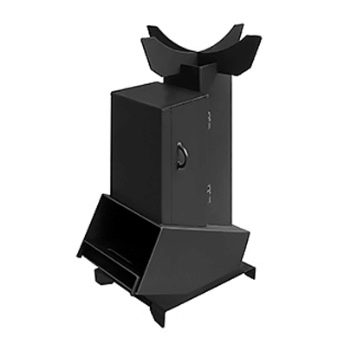
Operating tips
Whatever stove for the cauldron was purchased, when using it you will need:
- clean carbon deposits from the inner walls;
- break through layers of soot in the chimney;
- remove these blockages;
- regularly remove ash from the firebox and grate.
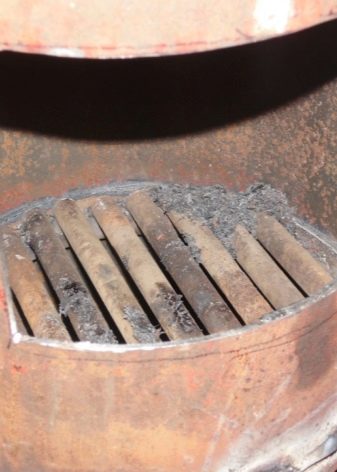
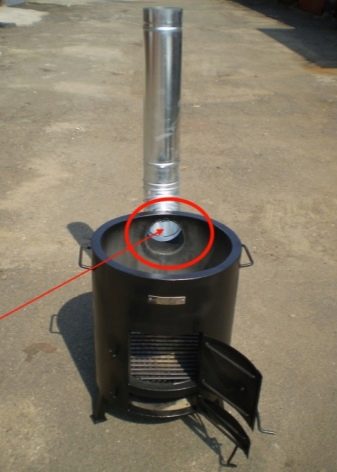
Before starting work, the stove will have to be properly warmed up. The fact is that in factories a protective shipping coating is applied to the inside of the product, and it must be burned out. But even if the hearth is made of brick, it will still have to be ignited. This will allow:
- dry the raw bricks completely;
- increase the strength of the set mortar;
- guarantee perfect dryness when working.
It is categorically unacceptable to use firewood in furnaces designed only for the use of charcoal.

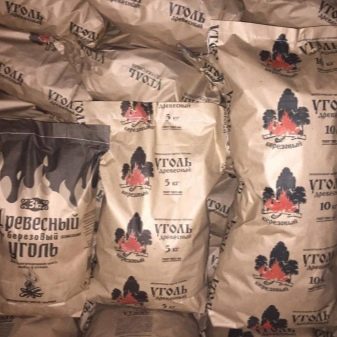
But even if the use of firewood is permissible, they cannot be ignited with gasoline, kerosene and other flammable substances. Hence the conclusion: only perfectly dry logs should be used.
And a few more important rules:
- household waste, grass, leaves, dry plant stems and the like should not be burned in a cauldron oven;
- you can not pour water to extinguish firewood or coals;
- you should not try to replace this oven with full-fledged heating devices, lighting a large fire.
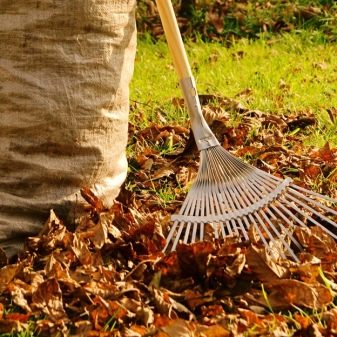

Installation rules
No matter how careful the selection of the product is and no matter how correctly it is handled, poor installation can ruin the whole business. Since stationary ovens must first of all create a good mood, they should only be installed where an advantageous view will appear.
In the absence of sufficient experience, it is better to immediately contact the professionals. The slightest mistakes can be extremely dangerous!
If the stove has a wide chimney, then it is placed in the open air: either on the free part of the personal plot, or on the site under a canopy. Products with a narrow smoke discharge channel are recommended to be installed in:
- gazebos;
- barbecue houses;
- summer kitchens;
- verandas;
- on the terraces.
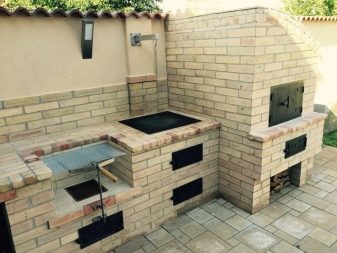

The passage of the chimney through any roof is allowed only with the help of a special pipe extension. If the stove is placed in an open place, you should also pay attention to:
- wind rose;
- nearby trees and shrubs;
- nearby buildings.
Smoke should not be carried into living rooms. It is also a bad idea to install a brazier directly under trees or bushes. Even if they do not catch fire, such a hearth due to excess heat and smoke can harm the plants.
But just choosing the right place is not enough. Heavy cast iron stoves must be placed on solid foundations, otherwise subsidence is inevitable. The best option when installing a stationary stove for a cauldron is considered to be reinforced concrete foundations with a minimum thickness of 0.1 m. Various decorative materials are placed on top of them.

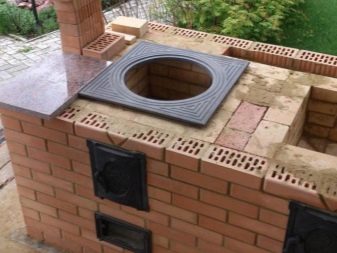
By the way, it is not necessary to use only one decorative material.
A combination of several options can look no less advantageous. You can also place the hearth on wooden floors, you just have to cover them with fire-resistant materials.
The barbecue oven should be placed as far as possible from:
- stocks of easily flammable substances;
- structures and items with high thermal conductivity;
- items that support combustion.
Fire safety requirements also indicate that the fume extraction must be carried out with particular care. When installing stoves in gazebos, a single foundation is made for them in order to exclude shifts relative to each other. Outdoor hearths are protected from bad weather by means of special waterproof coatings. All metal elements of the assembly are installed only after the solution has completely dried. At least 72 hours must elapse between the end of installation and the start of operation of the oven.
For the pros and cons of different stoves for a cauldron, see the next video.








